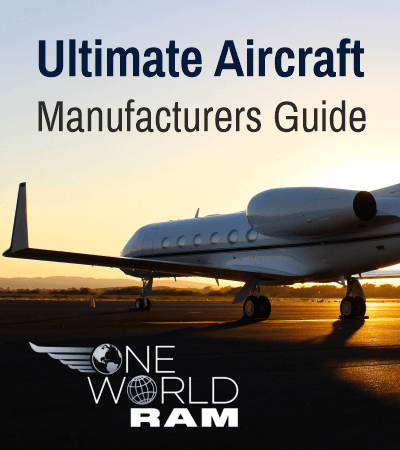Discover the iconic Piper PA-28-180, a remarkable single-engine aircraft that has shaped general aviation history. Whether you’re a prospective buyer, aviation enthusiast, or pilot in training, this comprehensive guide will walk you through everything you need to know about this versatile aircraft.
The Piper PA-28-180, commonly known as the Cherokee 180, stands as a testament to reliable aircraft design. This single-engine piston aircraft features fixed landing gear, making it an ideal choice for pilots across skill levels. Since its introduction in the 1960s, it has maintained its reputation for stable flight characteristics, straightforward maintenance, and versatile performance in various roles from training to personal transportation.
History and Development of the Piper PA-28 Series
The early 1960s marked the birth of the PA-28 series, with Piper Aircraft’s vision to create a modern, all-metal aircraft. The inaugural PA-28 Cherokee’s successful flight in 1960 paved the way for numerous variants. By 1965, the series expanded to include the larger PA-32 Cherokee Six, accommodating six passengers and addressing market demands for increased capacity.
Overview of the Piper PA-28-180 Model
The PA-28-180E variant, particularly from 1970, exemplifies Piper’s engineering excellence. This four-seat aircraft combines performance and efficiency through its single piston engine design. While Piper later developed retractable gear variants like the PA-28R-201 Arrow III, the PA-28-180’s fixed gear design remains popular for its operational simplicity and cost-effectiveness.
Specifications and Features of the Piper PA-28-180
Technical Specifications
- Engine: Lycoming O-360 series producing 180 horsepower
- Maximum takeoff weight: 2,400 lbs (1,089 kg)
- Useful load: Approximately 1,000 lbs (454 kg)
- Fuel capacity: 50-72 gallons (189-273 liters)
- Seating capacity: 4 people (including pilot)
Design and Construction
The PA-28-180 features an all-metal construction, ensuring durability and easy maintenance. Its distinctive low-mounted wing design provides exceptional stability and visibility. The unpressurized cabin, while limiting high-altitude operations, contributes to the aircraft’s reliability and simplified maintenance requirements.
Performance and Capabilities
| Performance Metric | Specification |
|---|---|
| Cruise Speed | 124 knots (230 km/h) |
| Service Ceiling | 14,000 feet (4,267 meters) |
| Range | 665 nautical miles (1,232 km) |
| Climb Rate | 740 feet per minute (3.8 m/s) |
Cockpit and Interior of the Piper PA-28-180
The PA-28-180’s cockpit exemplifies practical design, balancing functionality with comfort. While compact compared to larger Piper models, the interior layout maximizes available space, creating an optimal environment for both training and personal transportation. The fixed landing gear configuration simplifies operation and maintenance, particularly beneficial in training scenarios where operational simplicity is paramount.
Cockpit Layout and Controls
The PA-28-180’s cockpit showcases thoughtful design focused on pilot efficiency. The 1968 upgrade brought significant improvements to the Cherokee series, replacing traditional ‘push-pull’ engine controls with modern quadrant levers that enhanced operational ease and sophistication.
- Wide, accommodating instrument panel with clean, uncluttered layout
- Essential flight instruments positioned directly in front of pilot
- Engine gauges strategically placed for easy monitoring
- Ergonomically designed control yokes for extended flight comfort
- Adjustable rudder pedals to suit various pilot heights
A distinctive feature is the unique placement of propeller RPM and manifold pressure/fuel flow gauges above the pilot’s right knee. While this layout may require initial adjustment, it provides quick reference during critical flight phases. The multiengine-style throttle quadrant, inherited from earlier Cherokee models, adds professional sophistication to this single-engine aircraft.
Comfort and Interior Design
The PA-28-180’s interior balances functionality with comfort in its four-seat configuration. The 1968 enhancement added a third window on each side, modernizing the fuselage appearance while significantly improving visibility and natural light for all occupants.
- Comfortable seats with adjustable positions for various body types
- Strategic storage space behind rear seats
- Accessible storage areas for charts and headsets
- Durable, low-maintenance interior finishes
- Enhanced natural lighting through additional windows
Variants and Comparisons
The Piper PA-28 series has continuously evolved to meet diverse aviation needs. Each variant builds upon the original design while incorporating technological advancements and market demands, maintaining the Cherokee series’ popularity through ongoing improvements in performance, comfort, and efficiency.
Different Variants of the Piper PA-28
| Variant | Key Features |
|---|---|
| Archer TX/LX | Updated avionics, improved performance |
| Archer DX/DLX | Diesel-powered, better fuel efficiency |
| Pilot 100i | Cost-effective flight training solution |
Comparison with Competitors
| Feature | PA-28-180 | Cessna 172 |
|---|---|---|
| Wing Design | Low-wing | High-wing |
| Cruise Speed | Higher | Lower |
| Short-field Performance | Good | Better |
| Useful Load | Higher | Lower |
Buying Guide for the Piper PA-28-180
The PA-28-180 Cherokee 180 represents a reliable investment for both novice and experienced pilots. Its enduring market presence reflects its quality and performance capabilities, making it a popular choice in general aviation.
Factors to Consider When Buying
- Comprehensive pre-buy inspection by a qualified Cherokee-series mechanic
- Current market value assessment and price comparison
- Total airframe hours and engine time since overhaul
- Avionics upgrades and overall condition
- Detailed maintenance history documentation
- Market trends and comparable model pricing
Maintenance and Operating Costs
The PA-28-180’s fixed landing gear design contributes significantly to its cost-effective maintenance profile. This straightforward configuration eliminates the complexity and associated expenses typically found in retractable gear systems, though regular maintenance remains essential for safety and longevity.
- Engine maintenance – reliable Lycoming O-360 with reasonable service costs
- Fuel efficiency – approximately 10 gallons per hour at cruise power
- Regular inspections – annual checks required by regulations
- Insurance costs – competitive rates within its class
- Hangar fees – standard storage expenses
- Avionics updates – periodic modernization requirements
| Cost Category | Frequency |
|---|---|
| Annual Inspection | Yearly |
| Engine Maintenance | As per hours flown |
| Avionics Updates | As needed/required |
| Insurance | Annual renewal |
Conclusion
The Piper PA-28-180 Cherokee 180 stands as a testament to reliable and versatile aircraft design in general aviation. Its enduring popularity stems from an effective combination of solid performance characteristics, straightforward maintenance requirements, and overall value proposition.
- Proven track record in flight training and personal use
- Fixed landing gear contributing to lower maintenance costs
- Stable flight characteristics ideal for various skill levels
- Strong resale value and market presence
- Extensive support network for parts and service
For prospective buyers, conducting thorough pre-purchase inspections remains crucial for ensuring a sound investment. The aircraft’s combination of reliability, efficiency, and practical design features continues to make it a compelling choice in the ever-evolving general aviation market, whether for training purposes or private ownership.





Leave a Reply